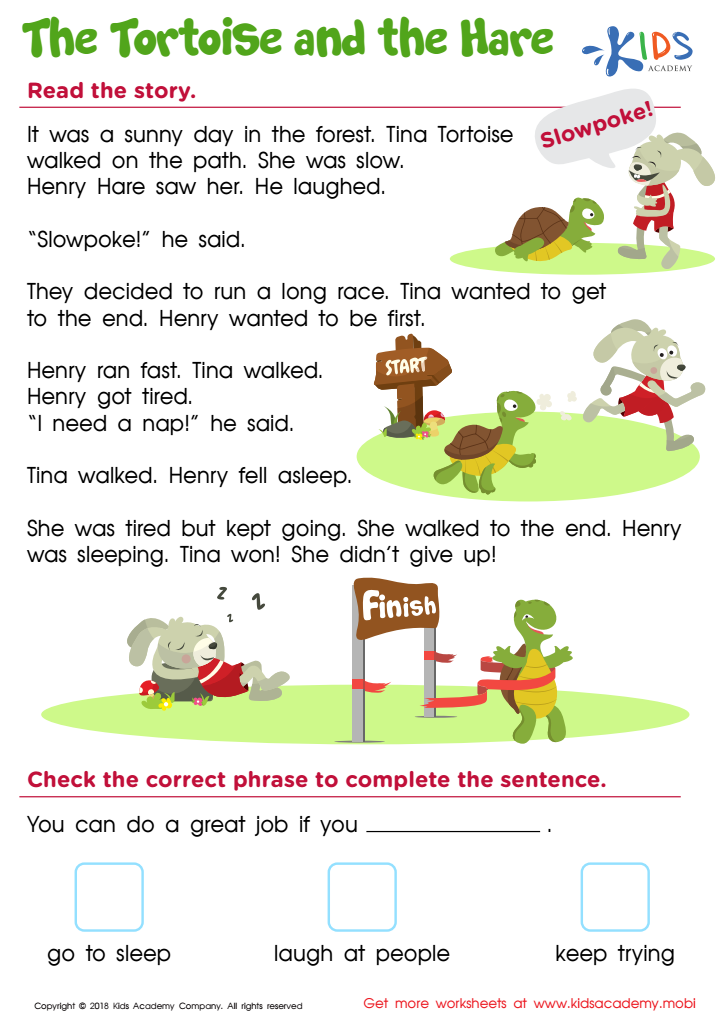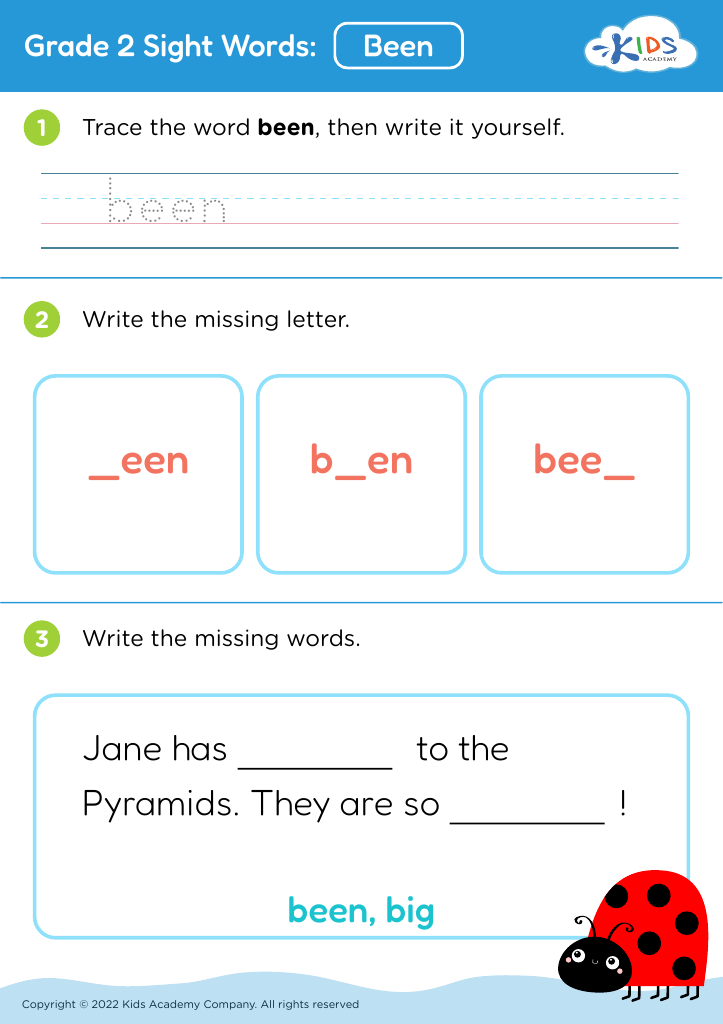Understanding sequencing Reading Worksheets for Ages 7-9
3 filtered results
-
From - To
Unlock the power of storytelling with our "Understanding Sequencing Reading Worksheets" designed for ages 7-9! These engaging resources help young learners grasp the essential skill of sequencing, which is crucial for comprehension and narrative understanding. Each worksheet incorporates fun activities that guide students in arranging events in chronological order, strengthening their reading skills. From colorful graphics to relatable scenarios, these worksheets ensure that children can visualize sequences clearly. Make learning enjoyable as your child builds confidence in their reading abilities while enhancing critical thinking through clear sequential analysis. Perfect for home or classroom use, inspire a love of reading today!


Sequence: A Day at the Park Worksheet


The Tortoise and the Hare Worksheet
Understanding sequencing in reading is crucial for children aged 7-9 as it lays the foundation for effective comprehension and logical thinking. Sequencing refers to the ability to identify the order of events in a text, which is essential for grasping narratives and comprehending cause-and-effect relationships. At this developmental stage, children's reading skills are evolving, and they start to engage with more complex stories and information. By focusing on sequencing, parents and teachers can enhance children's reading fluency and retention, helping them to make connections between ideas, characters, and events.
Moreover, mastering sequencing fosters critical thinking and enhances their problem-solving abilities. It prepares children not only for more advanced reading materials but also for real-life situations where understanding order and procedure is vital. Since many standardized assessments gauge students' ability to understand text, being adept at sequencing can boost their academic performance. Furthermore, it encourages discussions and reflections which enrich vocabulary and communication skills. Engaging with sequencing through enjoyable activities—such as storytelling, sequencing games, or guiding questions—can strengthen bonds between children, parents, and teachers, igniting a lifelong love for reading and learning. Therefore, incorporating sequencing into early literacy goals is pivotal for educational success.
 Assign to My Students
Assign to My Students





















